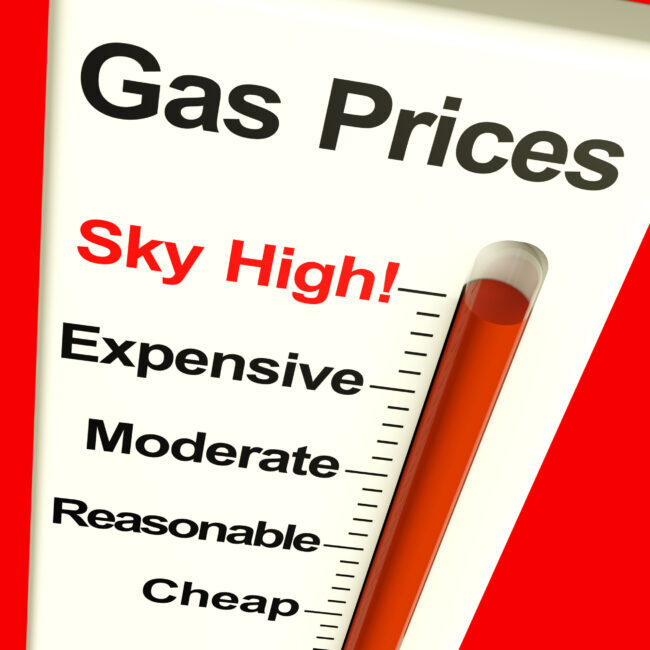Update: Just after we published this edition, Goldman Sachs released this comprehensive research piece; Stagflation Risk.
Recently, one media outlet raised the suggestion of government price controls. Generally, seen as a bad idea, none-the-less in this inflationary environment, some may perceive value from an action of this kind.
Additionally, in the current environment some politicians favor cancelling the gasoline tax at both the state and federal levels. This might beg the question, if these taxes can be abated, why are they in place anyway?
In 1971, President Nixon implemented price and wage controls. Some saw this as an election ploy and if so, it worked as he was reelected. In 2008, the free market Republican George W. Bush stated that sometimes you have to, “abandon free‐market principles to save the free‐market system.” WHAT?
Elected politicians often think they know more about running companies and economies than those who actually do. Printing money and regulating commercial processes that they know nothing about, usually in the name of the people who may have put them in office. Since most of these individuals do not have a working knowledge of the economy, is it any wonder that they bugger things up when they insert themselves?
And Now!
Self imposed, inflation is now higher than it has been since the 1970s. Blamed on a third world country invading its neighbor, leadership states, I “can’t do much” about gasoline prices. Need I say, malarkey! The world is awash with ‘clean’ fossil fuels; societies just choose not to use them effectively.
The concept of an Energy Basket is well defined and depending on geographical location, and need requirements any or all can be used as economically feasible. Moreover, the concept of Energy Transition is not new.
In 1993, Theodore Modis published this diagram in his peer reviewed work, Technological Substitutions in the Computer Industry whereby he presented a technology substitution model that both energy and silicon mapped to very well.

While renewables were not included in the model, readers will get the point that energy transition has always been an on going process.
We further discussed this process in our 2015 book, Structural Dynamics: Foundation of Next Generation Management Science. We defined, Structural Dynamics “the morphology or patterns of motion towards process equilibrium of interpersonal systems.” In other words the nexus of structure and process whereby markets seek equilibrium if only for a time.
Markets drive technology substitution. Only when the economics of new energy sources are acceptable does the ‘take up’ move quickly.
Volckerism
Tough Love by the Fed kicked Stagflation in the gut and yes it hurt the US economy for years, but it saved the country from a worse fate. From the Federal Reserve Bank of St. Louis, “On Oct. 6, 1979, Fed Chairman Paul Volcker took dramatic steps to rein in the runaway inflation that had been sapping the strength of our economy since the mid-1960s. Without his bold change in monetary policy and his determination to stick with it through several painful years, the U.S. economy would have continued its downward spiral. By reversing the misguided policies of his predecessors, Volcker set the table for the long economic expansions of the 1980s and 1990s.”
In 1965, the inflation rate was one percent. By 1980, it had hit 14 percent. Per Chairman Volcker’s statement, both Nixon and Carter implemented price controls with catastrophic effects on the nation.
The Heavy Hand
This is not a piece on fiscal or monetary policy, rather it is meant as a wake up call from someone who lived through that period. Distorted markets always correct, often rapidly and harshly. The Great Depression comes to mind as well, as the Dotcom Bubble, Financial Crisis of 2008, etc.
Those interested in the details and theory of human behavior in this period can follow up with the cited materials as well as a wealth of knowledge on the subject of price controls.
Bottom line, price controls did not work. Markets became distorted. Moreover, easy credit (very low interest rate) transformed to expensive credit (high interest rate) and eventually this painful process negatively transformed the marketplace in ways most contemporary readers have never known their whole life.
Price controls are tempting. It is easy to say, lets stop corporations from making obscene profits or gouging. However, the downside negatively impacts those who need economic help the most.
One expects that in the coming months, especially as the election nears calls for price controls will become louder. History has shown the results of such actions as economic suicide.
How will your company prepare for mandated price freezes?
For More Information
Please note, RRI does not endorse or advocate the links to any third-party materials. They are provided for education and entertainment only.
For more information on Cross Cultural Engagement, check out our Cross Cultural Serious Game. You can contact this author as well.
References:
Modis, Theodore. (1993). Technological Substitutions in the Computer Industry. Technological Forecasting and Social Change. 43. pp. 157-167.

